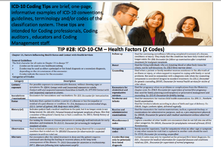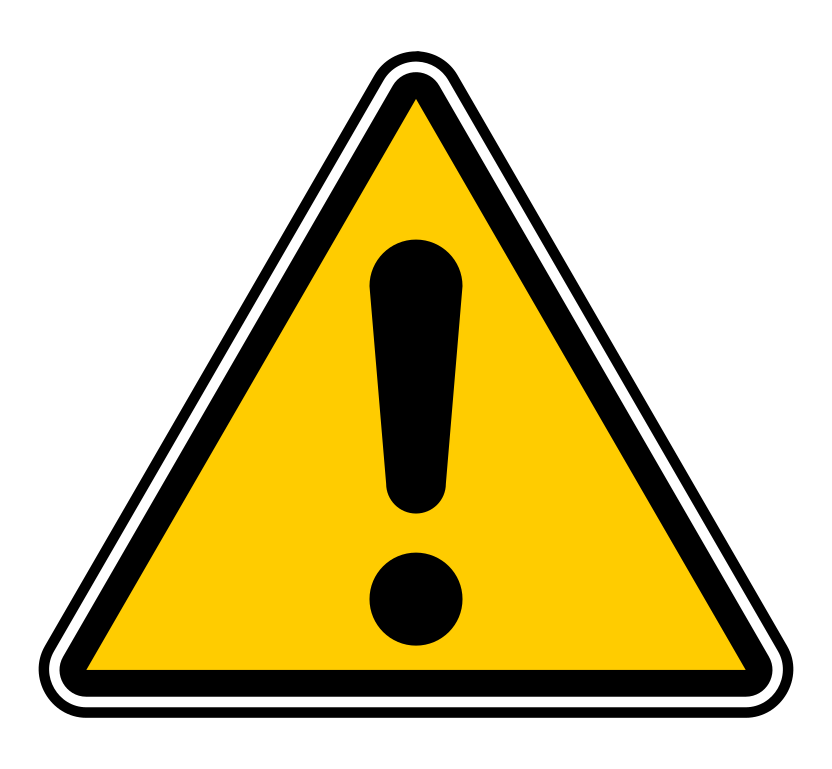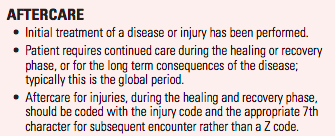The Importance of Z Codes
Z codes, found in Chapter 21: Factors Influencing Health Status and Contact with Health Services (Z00-Z99) of the ICD-10-CM code book, may be used in any healthcare setting. The ICD-10-CM Guidelines for Coding and Reporting instruct us to code for all coexisting comorbidities, especially those part of medical decision-making (MDM). It’s a good idea to review all 16 categories in Chapter 21 of the guidelines:Encounter codes require knowing sequencing guidelines and Medicare exceptions.
Z Codes as Principal, First-listed Diagnosis
Some Z codes are reported only as a primary diagnosis. ICD-10-CM guidelines list which Z codes are reportable only as the first listed diagnosis, with exception (Note: Italics are added for emphasis, bold text is in the original guidelines):The following Z codes/categories may only be reported as the principal/first-listed diagnosis, except when there are multiple encounters on the same day and the medical records for the encounters are combined:
Z00 Encounter for general examination without complaint, suspected or reported diagnosis
Except: Z00.6
Encounter for examination for normal comparison and control in clinical research program
Z01 Encounter for other special examination without complaint, suspected or reported diagnosis
Z02 Encounter for administrative examination
Z03 Encounter for medical observation for suspected diseases and conditions ruled out
Z04 Encounter for examination and observation for other reasons
Z33.2 Encounter for elective termination of pregnancy
Z31.81 Encounter for male factor infertility in female patient
Z31.82 Encounter for Rh incompatibility status
Z31.83 Encounter for assisted reproductive fertility procedure cycle
Z31.84 Encounter for fertility preservation procedure
Z34 Encounter for supervision of normal pregnancy
Z39 Encounter for maternal postpartum care and examination
Z38 Liveborn infants according to place of birth and type of delivery
Z40 Encounter for prophylactic surgery
Z42 Encounter for plastic and reconstructive surgery following medical procedure or healed injury
Z51.0 Encounter for antineoplastic radiation therapy
Z51.1- Encounter for antineoplastic chemotherapy and immunotherapy
Z52 Donors of organs and tissues
Except: Z52.9 Donor of unspecified organ or tissue
Z76.1 Encounter for health supervision and care of foundling
Z76.2 Encounter for health supervision and care of other healthy infant and child
Z99.12 Encounter for respirator [ventilator] dependence during power failure

Z Codes: Who’s on the First?
Encounter codes require knowing sequencing guidelines and Medicare exceptions. When applied correctly, Z codes improve claims accuracy and specificity,
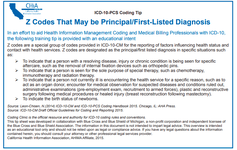
Z codes summary from the guidelines:
21. Chapter 21: Factors influencing health status and contact with
health services (Z00-Z99)
Note: The chapter specific guidelines provide additional information about the
use of Z codes for specified encounters.
a. Use of Z Codes in Any Healthcare Setting
Z codes are for use in any healthcare setting. Z codes may be used as
either a first-listed (principal diagnosis code in the inpatient setting) or
secondary code, depending on the circumstances of the encounter.
Certain Z codes may only be used as first-listed or principal diagnosis.
b. Z Codes Indicate a Reason for an Encounter
Z codes are not procedure codes. A corresponding procedure code
must accompany a Z code to describe any procedure performed.
c. Categories of Z Codes
1) Contact/Exposure
Contact/exposure codes may be used as a first-listed code to explain an encounter for testing, or, more commonly, as a secondary code to identify a potential risk.
2) Inoculations and vaccinations
Code Z23 may be used as a secondary code if the inoculation is given as a routine part of preventive health care, such as a well-baby visit.
Page Not Found

CODING COVID-19 Vaccination – MedLearn Publishing
EDITORS NOTE: This article has been updated to include a code that should be used for an allergic reaction to vaccines. Vaccination coding and billing questions answered. COVID-19 vaccination is ramping up. We wrapped up Vaccination Nation month at the end of February. I have been fielding...

Taking The Sting Out Of Immunization Coding
Here are some billing tips to better understand immunization coding when it comes to medical billing and coding.
3) Status
Status codes indicate that a patient is either a carrier of a disease or has the sequelae or residual of a past disease or condition.
4) History (of)
There are two types of history Z codes, personal and family. Personal history codes explain a patient’s past medical condition that no longer exists and is not receiving any treatment, but that has the potential for recurrence, and therefore may require continued monitoring. Family history codes are for use when a patient has a family member(s) who has had a particular disease that causes the patient to be at higher risk of also contracting the disease.
The history Z code categories are:
Z80 Family history of primary malignant neoplasm
Z81 Family history of mental and behavioral disorders
Z82 Family history of certain disabilities and chronic
diseases (leading to disablement)
Z83 Family history of other specific disorders
Z84 Family history of other conditions
Z85 Personal history of malignant neoplasm
Z86 Personal history of certain other diseases
Z87 Personal history of other diseases and conditions
Z91.4- Personal history of psychological trauma, not
elsewhere classified
Z91.5 Personal history of self-harm
Z91.81 History of falling
Z91.82 Personal history of military deployment
Z92 Personal history of medical treatment
Except: Z92.0, Personal history of contraception
Except: Z92.82, Status post administration of tPA
(rtPA) in a different facility within the last 24 hours
prior to admission to a current facility
5) Screening
Screening is the testing for disease or disease precursors in seemingly well individuals so that early detection and treatment can be provided for those who test positive for the disease. A screening code may be a first-listed code if the reason for the visit is specifically the screening exam. It may also be used as an additional code if the screening is done during an office visit for other health problems.
Screenings Require a Diagnosis, but Not a Patient Complaint
Screening is testing for disease or disease precursors in seemingly well individuals so early detection and treatment can be provided for those who test positive for the disease (e.g., a screening mammogram is intended to detect breast cancer early, so it can be treated before it becomes more serious or widespread). Screening differs from diagnostic examination, in which testing occurs in a patient with signs and symptoms to rule out or confirm a suspected diagnosis. If a test is to qualify as a screening, the patient must be asymptomatic for the condition being tested.
Successfully Report Z Codes for Screening Exams
Look to ICD-10-CM encounter codes when the testing is preventive, not diagnostic. ICD-10-CM diagnosis codes support medical necessity by identifying the
6) Observation
There are three observation Z code categories.
The observation Z code categories: Z03 Encounter for medical observation for suspected diseases and conditions ruled out Z04 Encounter for examination and observation for other reasons Except: Z04.9, Encounter for examination and observation for unspecified reason Z05 Encounter for observation and evaluation of newborn for suspected diseases and conditions ruled out. The observation codes are primarily to be used as a principal/first-listed diagnosis. An observation code may be assigned as a secondary diagnosis code when the patient is being observed for a condition that is ruled out and is unrelated to the principal/first-listed diagnosis (e.g., patient presents for treatment following injuries sustained in a motor vehicle accident and is also observed for suspected COVID-19 infection that is subsequently ruled out). Also, when the principal diagnosis is required to be a code from category Z38, Liveborn infants according to place of birth and type of delivery, then a code from category Z05, Encounter for observation and evaluation of newborn for suspected diseases and conditions ruled out, is sequenced after the Z38 code. Additional codes may be used in addition to the observation code, but only if they are unrelated to the suspected condition being observed.
7) Aftercare
Aftercare visit codes cover situations when the initial treatment of a disease has been performed and the patient requires continued care during the healing or recovery phase, or for the long-term consequences of the disease. The aftercare Z code should not be used if treatment is directed at a current, acute disease. The aftercare codes are generally first listed to explain the specific reason for the encounter. Encounter for antineoplastic chemotherapy and immunotherapy. These codes are to be first listed, followed by the diagnosis code when a patient’s encounter is solely to receive radiation therapy, chemotherapy, or immunotherapy for the treatment of a neoplasm. Certain aftercare Z code categories need a secondary diagnosis code to describe the resolving condition or sequelae.
Aftercare codes are found in categories Z42-Z49 and Z51.
Reporting Encounters for Aftercare
Reporting rules for aftercare are as follows:
- The aftercare Z-code should not be used if treatment is directed at a current, acute disease. The diagnosis code is to be used in these cases. Exceptions to this rule include:
- Codes for encounters for antineoplastic radiation, chemotherapy and immunotherapy (Z51.0, Z51.1-) are assigned if the sole reason for the encounter is antineoplastic therapy – even if the patient still has the neoplastic disease.
- Aftercare for injuries is not reported with Z-codes. Assign the Z-code with the appropriate seventh character for subsequent care.
- The aftercare codes are generally the first listed diagnosis.
- Aftercare codes should be used in conjunction with other aftercare codes, diagnosis codes and/or other categories of Z-codes to provide better detail on the specifics of the aftercare encounter/visit, unless otherwise directed by the classification.
- Certain aftercare Z-codes require a secondary diagnosis code to describe the resolving condition or sequela. For other aftercare codes, the condition is included in the code description and a secondary diagnosis is not required.
ICD-10-CM Coding for Aftercare
The codes for factors influencing health and contact with health services represent reasons for encounters. In ICD-10-CM, these codes are located in
8) Follow-up
The follow-up codes are used to explain continuing surveillance following completed treatment of a disease, condition, or injury. They imply that the condition has been fully treated and no longer exists. They should not be confused with aftercare codes, or injury codes with a 7th character for subsequent encounter, that explain ongoing care of a healing condition or its sequelae. Follow-up codes may be used in conjunction with history codes to provide the full picture of the healed condition and its treatment. The follow-up code is sequenced first, followed by the history code.
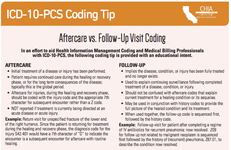
9) Donor
Codes in category Z52, Donors of organs and tissues, are used for living individuals who are donating blood or other body tissue. These codes are only for individuals donating for others, not for self-donations. They are not used to identify cadaveric donations.
10) Counseling
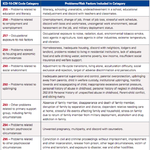
11) Encounters for Obstetrical and Reproductive Services
Z codes for pregnancy are for use in those circumstances when none of the problems or complications included in the codes from the Obstetrics chapter exist (a routine prenatal visit or postpartum care). Codes in category Z34, Encounter for supervision of normal pregnancy, are always first listed and are not to be used with any other code from the OB chapter. y Z3A, Weeks of gestation, may be assigned to provide additional information about the pregnancy. The outcome of delivery, category Z37, should be included on all maternal delivery records. It is always a secondary code. Codes in category Z37 should not be used on the newborn record.
12) Newborns and Infants
Newborn Z codes/categories: Z76.1 Encounter for health supervision and care of foundling Z00.1- Encounter for routine child health examination Z38 Liveborn infants according to place of birth and type of delivery
13) Routine and Administrative Examinations
Z11 Encounter for screening for infectious and parasitic diseases
Z12 Encounter for screening for malignant neoplasms
Z13 Encounter for screening for other diseases and disorders
Except: Z13.9 Encounter for screening, unspecified
Z36 Encounter for antenatal screening of mother
14) Miscellaneous Z Codes The miscellaneous Z codes capture a number of other health care encounters that do not fall into one of the other categories.
15) Nonspecific Z Codes
When there is no further documentation to permit more precise coding.
